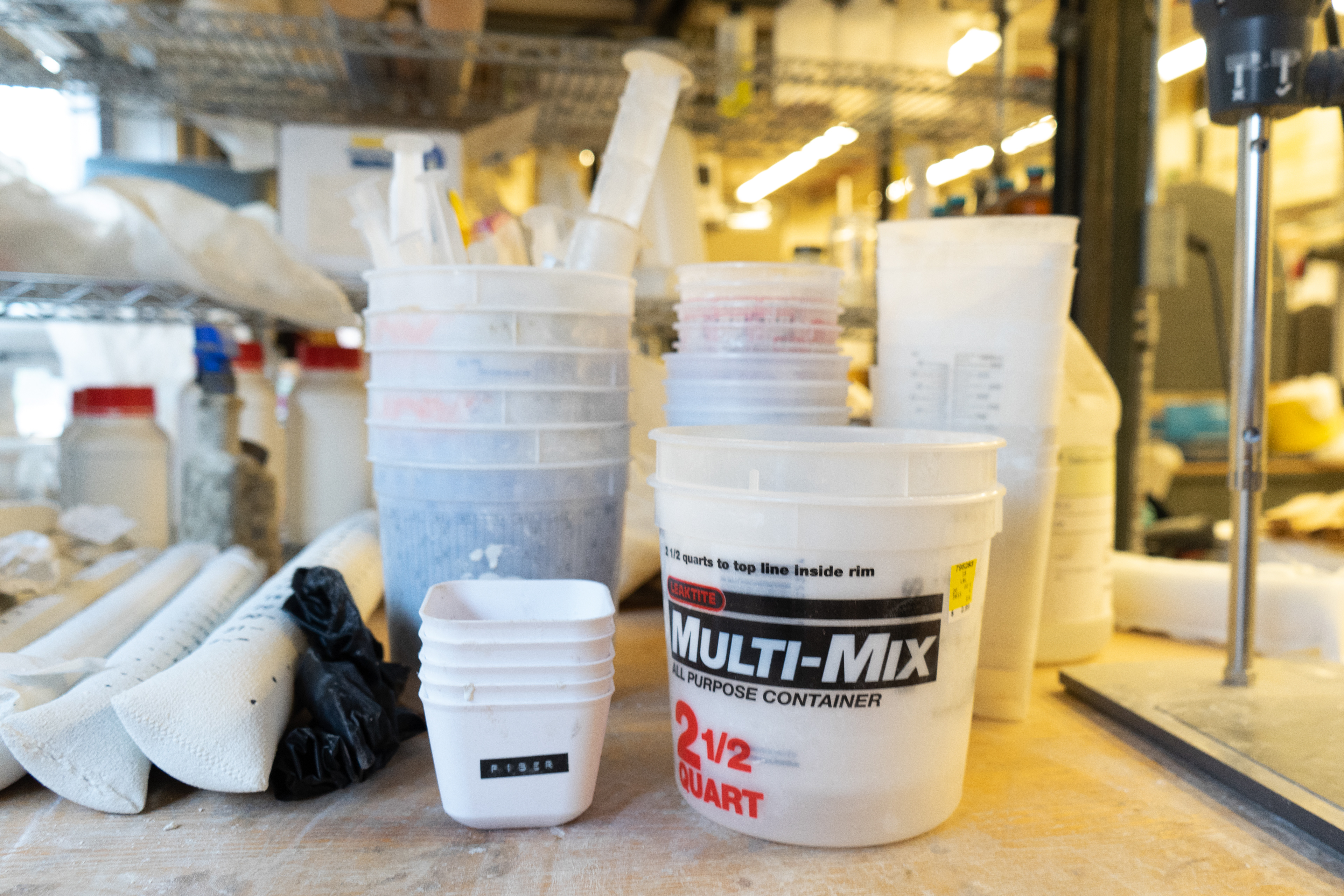Cocoon focuses on the creation of concrete structures using three-dimensional (3D) printed clay formwork. Typically, formwork involved in creating complex geometry requires extensive machining time and post-finishing of the formwork, a material, and labor-intensive process (Kudless et al. 2020). Recent research advancements in concrete fabrication have incorporated 3D printing technology to create parametrically designed concrete columns with little formwork. This research seeks to advance manufacturing processes of 3D printed formwork by incorporating clay as a viable material for fabrication. The process allows for the creation of complex geometries that are challenging if not impossible with other methods. Demolding these complex geometries requires little labor and can be easily recycled, strengthening its viability as a sustainable construction process.
Authors
Mackenzie Bruce
Gabrielle Clune
Ruxin Xie
Instructors:
Prof. Arash Adel
Taubman College - ARCH 734 Capstone
May. 2020
This paper has been selected and published at Acadia 2021 Conference, and ETH Zürich Research Collection
This project has been selected and awarded in the 2021+2022 Taubman College Student Show with Honorable Mention
The development of 3D printing technology allowed the creation of forms in a nearly zero-waste process. Large-scale Fused Deposition Modelling (FDM) printing technology is continuously advancing, creating a process that can be applied to the architecture scale through the integration of industrial robotic arms (Hack and Lauer 2014). The progression of printing technology gives freedom of form to designers not previously executable or feasible at this scale of printing. Not only is it thought of as a process for printing building-scale components, but as the formwork for casting these components with traditional building materials such as concrete (Burger et al. 2020).
This research seeks to explore the hypothesized benefits of using clay as formwork. We see clay to have many potential benefits, most notably the sustainability aspect of the material. Clay is a low-tech and natural material, with its use dating back to prehistoric times, making it one of the oldest building materials on earth (Gillott 1962). It is commonly understood that clay gains its plasticity when wet and becomes hard and brittle when dry. Due to the shrinkage of the clay as it dries, can the clay begin to self-demold, creating a fast and easy demolding process? Can the clay then be recycled by adding water to rehydrate the clay to create a zero-waste process? The plasticity of the clay allows it to be extruded for 3D printing of the material in a continuous bead, similar to the traditional process of clay coil pots (Kepczynska-Walczak 2018). If the clay is easily removable once dried, branching structures could be created using the 3D printing process while maintaining a continuous print bead. This would also allow the process to accommodate additional supports to structure the print from deformation from the cast concrete due to issues that will come with hydrostatic pressure. Can this process address the building scale as well as accommodate for geometries not previously feasible to be printed with clay due to limitations of geometry such as overhangs and scale?

Concrete Mixing Station

Mixing Concrete

Clay Formwork

Resulting Concrete Cast
Cocoon’s novel fabrication process aims to reduce the environmental impact of complex concrete formwork. The introduction of incremental casting and development of a fast-setting concrete mix allows clay formwork to reach scales previously unachievable.
To prove the viability of 3D-printed clay formwork, complex form generation is necessary. By implementing computational design into the fabrication process, a continuous toolpath generator is created using Grasshopper3D. The custom toolpath generator provides not only the boundary for concrete but also creates a minimal surface supporting branching structure called Void Support. In addition, to improve the rigidity of the formwork, an additional support system called Rib Support is added to the clay printing toolpath.






The prototype verification process contains mainly three parts: Simulation, physical measuring, and scanning. The simulation includes 3 simplified typologies. Scanning and physical measuring are based on the initial cylinder test. The simulation process seeks to use visual simulation as a tool to understand and predict the potential geometric performance. Three column typologies with the same diameter but different heights are analyzed, focusing on the maximum displacement area with its variables. The results indicate the maximum displacement area is at the same level for all three cases. This supports the hypothesis that hydrostatic pressure is dependent on the height of each cast and the density of the concrete.

